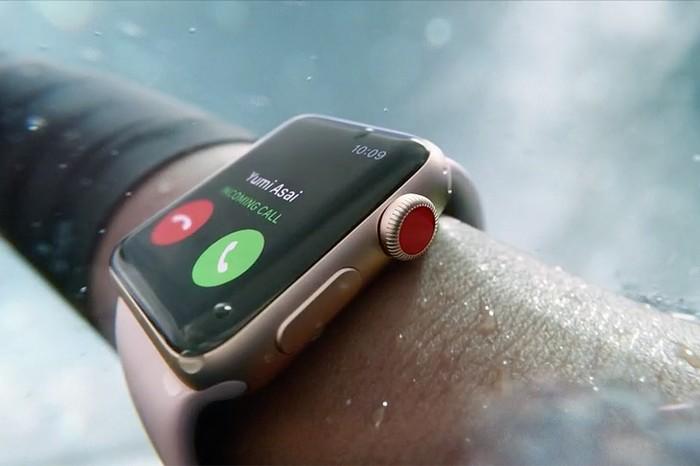The Apple Watch is equipped with features designed to ensure safety and provide help in emergencies. This guide will walk you through the process of calling emergency services, setting up emergency contacts, and using your Apple Watch effectively in various situations.
Understanding the Emergency Features of Apple Watch
Apple Watch includes several features for emergencies:
Emergency SOS: Allows you to call emergency services and alert your emergency contacts.
Fall Detection: Detects if you’ve had a hard fall and can automatically call emergency services if you don’t respond.
Medical ID: Stores important health information that can be accessed from the lock screen.
How to Call Emergency Services Using Emergency SOS
Step 1: Access Emergency SOS
On Apple Watch Series 4 and later: Press and hold the side button (below the Digital Crown) until the Emergency SOS slider appears.
On Apple Watch Series 3 and earlier: Press and hold the side button until the Emergency SOS slider appears.
Step 2: Activate Emergency SOS
Using the Slider: Drag the Emergency SOS slider to call emergency services.
Using Automatic Call: If you continue to hold down the side button, after a few seconds, the Apple Watch will automatically call emergency services.
Step 3: Confirm Your Call
With Slider: After dragging the slider, the call will be made automatically.
Automatic Call: The call will initiate after the countdown ends.
Step 4: End the Call
During the Call: You can end the call by pressing the red end call button on the screen.
Post Call: If your Apple Watch has cellular connectivity, the call will be made even if your iPhone is not nearby.
Setting Up Emergency Contacts
Step 1: Open the Health App
On Your iPhone: Open the Health app.
Step 2: Access Medical ID
In the Health App: Tap on the “Medical ID” tab at the bottom.
Step 3: Edit Your Medical ID
Add Emergency Contacts: Tap “Edit” and scroll to the “Emergency Contacts” section. Add contacts who should be notified in case of an emergency.
Step 4: Enable Medical ID Access
On the Lock Screen: Ensure “Show When Locked” is enabled so that emergency responders can access your Medical ID without unlocking your device.
Using Fall Detection on Apple Watch
Step 1: Enable Fall Detection
On Apple Watch: Open the Settings app, tap “Emergency SOS,” and toggle on “Fall Detection.”
Step 2: How It Works
Automatic Detection: If the watch detects a hard fall, it will display an alert and give you an option to call emergency services.
If You Don’t Respond: If you don’t respond to the alert within 60 seconds, the watch will automatically call emergency services and send your location to your emergency contacts.
Step 3: Disabling Fall Detection
If Needed: You can disable Fall Detection by going to the Settings app on your Apple Watch, tapping “Emergency SOS,” and toggling off “Fall Detection.”
Using Apple Watch for Other Emergencies
Medical Emergencies
Medical ID: Use the Medical ID feature to provide first responders with essential health information.
Access from Lock Screen: Swipe left on the lock screen and tap “Medical ID” to view critical health information.
Lost Apple Watch
Find My App: Use the Find My app on your iPhone or iCloud.com to locate your Apple Watch, lock it, or erase its data remotely.
Accident Alerts
Automatic Notifications: If your watch detects a severe accident, it can send out alerts to your emergency contacts.
See Also: How To Turn On Cardio Fitness On Apple Watch
Tips for Using Emergency Features
Regular Updates
Update Software: Ensure your Apple Watch software is up to date to benefit from the latest emergency features and improvements.
Practice Using Features
Familiarize Yourself: Regularly practice using the Emergency SOS and Fall Detection features to ensure you’re comfortable using them in a real emergency.
Check Connectivity
Ensure Connectivity: Verify that your Apple Watch has a stable connection to your iPhone or Wi-Fi to ensure emergency features work correctly.
Troubleshooting Common Issues
Emergency SOS Not Working
Check Settings: Ensure Emergency SOS is enabled in the Settings app.
Connectivity Issues: Verify that your Apple Watch is connected to your iPhone or has a cellular connection.
Fall Detection Not Activating
Check Age Settings: Fall Detection is only available for users aged 65 and older by default. Ensure your age is correctly set in your Medical ID if you are over 65 and want this feature enabled.
No Sound or Vibration
Check Volume Settings: Ensure your watch is not set to silent or do not disturb mode.
Emergency Services Around the World
Regional Variations
Country-Specific Numbers: Be aware that Emergency SOS numbers may vary by country. Apple Watch typically dials the local emergency number based on your location.
Language Settings
Language Preferences: Emergency services will be contacted in the language set on your Apple Watch.
Privacy Considerations
Data Security
Emergency Contacts: Your emergency contacts and Medical ID information are private and only accessible in emergencies.
Data Transmission: Be mindful of your location data being shared with emergency contacts and services during an emergency.
Conclusion
The Apple Watch provides a range of features designed to keep you safe in emergencies. By understanding and properly setting up these features, you can ensure that you are well-prepared for various emergency situations. Regularly updating your watch, practicing emergency protocols, and being aware of regional differences in emergency services can make a significant difference in ensuring your safety and the safety of others.

